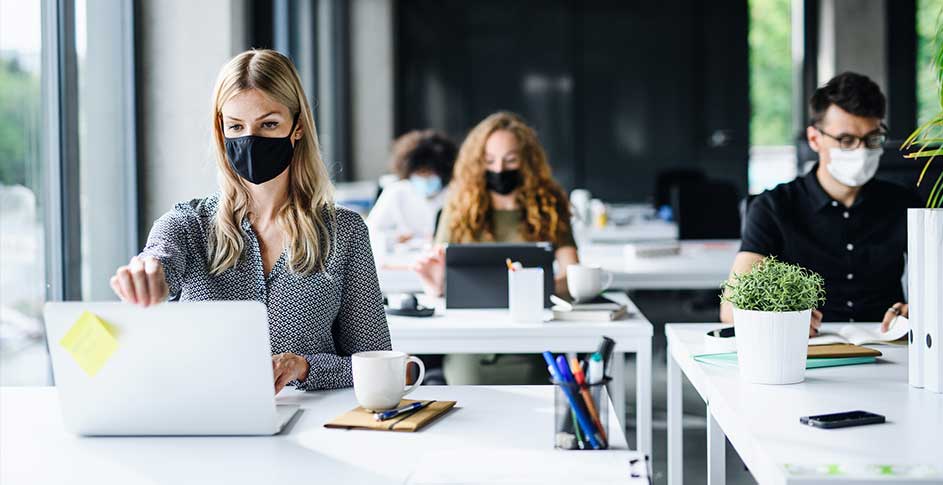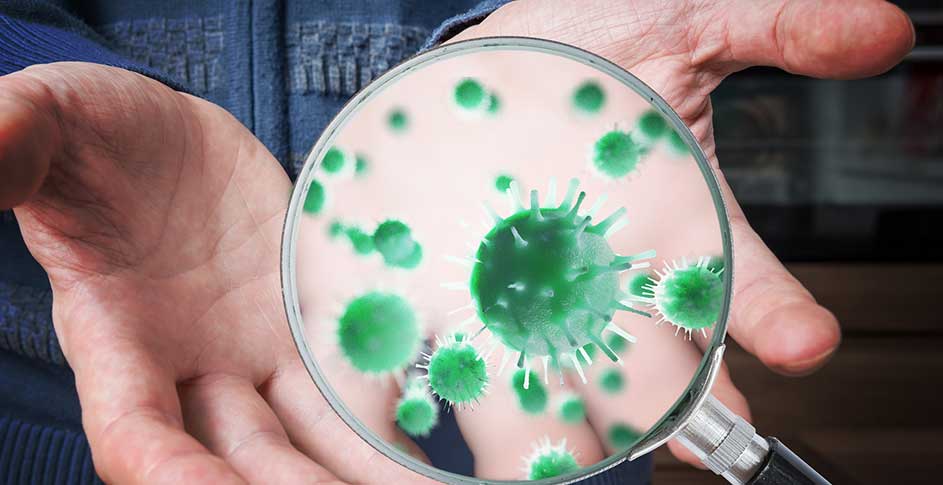With so many air purification choices on the market, doing your due diligence beforehand will ensure you can get the best solution for your space. Once you have established what type of purifier your business needs (active, passive, or hybrid), where that purifier should go (induct, portable, or ceiling), and what size fits your space, you’ll need to decide on the exact model(s) to buy. Below are 5 questions you and your distributor/vendor/supplier can ask together to help you find the right fit.
1. Active Purifiers: Is It Safe?
Active purifiers are those which react with contaminants while they are still out in the room. Some types of active purifiers risk generating undesirable byproducts in the course of their operation. We cover each of these concerns extensively in our article on air purifier safety, but a brief review is warranted here.
Unintentional Ozone Generation
Ozone can be generated any time that the air is energized, such as is the case with UV light, plasma purifiers, ionizers, and electrostatic precipitators. In recent years, modifications have improved most of these methods to reduce their ozone generation capacity to acceptable levels. However, some do still emit too much. The California Air Resource Board (CARB) tests air purifiers to see if they emit less than 0.050 parts per million of ozone.
Intentional Ozone Generation
Some purifiers intentionally generate ozone to remove odors caused by flood or fire damage. These machines can be helpful under the supervision of trained professionals, but the ozone cell is not intended for use in an occupied space.
Negative Ionization
Negative ionization charges airborne particles, clumping them together so they fall out of the air and onto surfaces.
However, if the particles are more likely to stick to surfaces, what’s to stop them from sticking to your lungs? The EPA has this concern too, but they cite two rather dated studies as evidence. One of these was part of a deliberate attempt to make particles stick to people’s respiratory systems, which means they may not stick under field conditions. Further research is required, though much more recent study performed on a model lung suggests they might.
Negative ionization is distinct from bipolar ionization, which seeks to inactivate contaminants directly rather than clumping them together.
Incomplete VOC Breakdown
Some versions of photocatalytic oxidation (PCO) fail to achieve a complete breakdown of existing VOCs, producing new VOCs which are equally undesirable. ActivePure’s proprietary Advanced Photocatalysis cell design successfully prevents this, making it fundamentally distinct from PCO.
2. Portable, Passive Purifiers: How Much Clean Air Does It Deliver?
Passive purifiers are those which draw air through a filter or reactive chamber to capture/neutralize contaminants. Thus, unlike active purifiers, the amount of air passive purifiers move and the percentage of that air they clean is highly relevant to their efficacy. How much air a purifier moves is usually measured in cubic feet per minute (CFM). The percentage of air cleaned is called the Clean Air Delivery Rate (CADR).
The CADR of portable purifiers has been standardized by the Association of Home Appliance Manufacturers (AHAM). AHAM tests an air purifier’s ability to remove smoke (representing small particles), dust (representing medium particles), and pollen (representing large particles) in a standardized test chamber. To do so, an air purifier is placed in a standardized chamber with a variety of contaminants. The max CADR rating a machine can receive is 450 for dust/pollen and 400 for smoke.
Note that AHAM’s standards are only for purifiers that are both portable and passive; your supplier may not be able to give you a CADR for active and/or induct purifiers.
CADR is rarely identical to CFM. In general, a machine’s CADR rating should be at least 2/3rd of its CFM.
3. Portable Purifiers: How Quiet Is It?
Many portable air purifiers have fans and motors, either to draw air through a filter or to send purifying particles out into the room. Depending on their size and efficiency, these fans can be loud or whisper quiet. Manufacturers often list the decibels which a product produces on their spec sheet.
If you do buy a louder purifier, placing it in a workspace with carpets, curtains, and cloth furniture may cut down on its auditory impact.
If you are buying a secondhand purifier (not recommended), older models tend to be noisier than newer models.
Some purifiers are entirely fan-less as well. These can be an option for smaller areas.
4. All Purifiers: How Frequently Does It Require Maintenance?
| Type of Purifier | Electrostatic Filters | Electrostatic Precipitators | True HEPA | UV Light | ActivePure |
| Type of Maintenance | Cleaning | Cleaning | Filter Replacement | Bulb Replacement | Cell Replacement |
| Times Per Year | 12 | 4 | 1-2 | 0-2 | 1 |
A chart of several technologies’ maintenance schedules. Please be advised that this frequency may vary due to brand, environment, and use.
Nearly every type of purifier requires some maintenance and repair, whether filter replacement, cell replacement, or cleaning.
Filter life cycle will vary widely depending on the filter’s MERV rating, the filter type, and the contaminants in the room. In general, you should change true HEPA filters once every 6 months to a year. Electrostatic filters (not to be confused with electrostatic precipitators) need to be cleaned every month. The life of an activated carbon filter varies widely depending on the amount of carbon it contains.
Non-filtering purifiers will have a different maintenance cycle; (note that many purifiers contain multiple technologies). Needlepoint ionizers need to be cleaned every 1 to 2 years, while electrostatic precipitators need to be cleaned 4 times per year. UV bulbs will need to be replaced every 5,000 to 9,000 hours, which means every 7 to 12 months if operated continuously (or 14 to 24 months if not). ActivePure cells last 12 months.
The exact costs for such maintenance vary by size and brand, so ask your supplier for the cost on a purifier-by-purifier basis. While such information is important to your buying decision, keep in mind that air purification air purification tends to pay for itself in the long run.
5. All Purifiers: Is it Backed by Laboratory and Real-World Testing?
Every air purifier comes with impressive-sounding stats to back it up, such as “99% elimination of contaminants.” That 99%, however, might occur over the course of 1 minute or 1 day. Also, the tests to reach that number may have been performed by the manufacturer itself, by an unaffiliated lab (meaning one hired by the manufacturer but not owned by the manufacturer), or by a third party (such as AHAM). Thus, it’s best to dig for the details behind air purification claims to see what the numbers are actually saying.
A Few Final Words
These 5 questions will help you and your distributor find the right purifier for your organization’s needs.
Finding the right distributor, however, is far easier; it only requires answering a single question:



